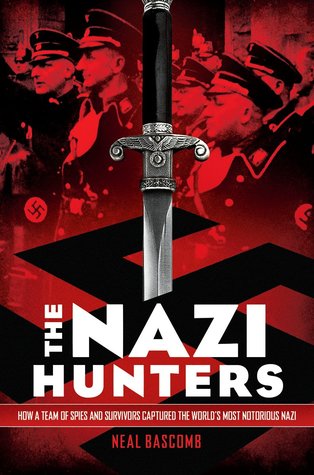Nonfiction Monday: Bombs and Nazis
ABOUT THE BOOK
In 1946, as part of the Cold War arms race, the US military launched a program to test nuclear bombs in the Marshall Islands of the Pacific Ocean. From 1946 until 1958, the military detonated sixty-seven nuclear bombs over the region's Bikini and Enewetak Atolls. The twelfth bomb, called Bravo, became the world's first nuclear disaster. It sent a toxic cloud of radiation over Rongelap Atoll and other nearby inhabited islands. The testing was intended to advance scientific knowledge about nuclear bombs and radiation, but it had much more far-reaching effects. Some of the islanders suffered burns, cancers, birth defects, and other medical tragedies as a result of radiation poisoning. Many of the Marshallese were resettled on other Pacific islands or in the United States. They and their descendants cannot yet return to Bikini, which remains contaminated by radiation. And while the United States claims it is now safe to resettle Rongelap, only a few construction workers live there on a temporary basis. For Bombs over Bikini, author Connie Goldsmith researched government documents, military film footage, and other primary source documents to tell the story of the world's first nuclear disaster. You'll meet the people who planned the test operations, the Marshall Islanders who lost their homes and suffered from radiation illnesses, and those who have worked to hold the US government accountable for catastrophically poor planning. Was the new knowledge about nuclear bombs and radiation worth the cost in human suffering? You decide.
REVIEW
Bombs Over Bikini provides a powerful account of a lesser known human-caused disaster than remains with us today. After World War II, there was still a lot that the military and scientists didn't know about nuclear bombs. As a result, a program was set up to test what happens when a nuclear bomb goes off under a variety of circumstances. Unfortunately, due to a series of poor decisions and the manipulation of native peoples the results contaminated a number of islands in the Bikini Atoll. Even today several of the islands remain uninhabitable. This book reminded me strongly that using such power needs to be done responsibly and in a thoughtful manner.
The book is beautifully designed with photographs, side notes of interest, and crisply written text. The source notes, works cited page, glossary, and additional resources provide evidence that the author has clearly done her work well. The publisher also provides additional resources for those who want to use the book in education. A great nonfiction account on a controversial topic.
ABOUT THE BOOK
A thrilling spy mission, a moving Holocaust story, and a first-class work of narrative nonfiction.
In 1945, at the end of World War II, Adolf Eichmann, the head of operations for the Nazis' Final Solution, walked into the mountains of Germany and vanished from view. Sixteen years later, an elite team of spies captured him at a bus stop in Argentina and smuggled him to Israel, resulting in one of the century's most important trials -- one that cemented the Holocaust in the public imagination.
THE NAZI HUNTERS is the thrilling and fascinating story of what happened between these two events. Survivor Simon Wiesenthal opened Eichmann's case; a blind Argentinean and his teenage daughter provided crucial information. Finally, the Israeli spies -- many of whom lost family in the Holocaust -- embarked on their daring mission, recounted here in full. Based on the adult bestseller HUNTING EICHMANN, which is now in development as a major film, and illustrated with powerful photos throughout, THE NAZI HUNTERS is a can't-miss work of narrative nonfiction for middle-grade and YA readers.
REVIEW
Wow. This is an amazing book. Not only is the story a fascinating one, but it is very well-written and quite compelling. Bascomb does a nice job of providing just enough background about the different people to provide understanding for why they behaved the way they did and why Eichmann's capture was so important. I was a bit surprised at my own reaction though to Eichmann himself. The man was responsible for doing some awful things and I expected to be rather disgusted with his actions and his rational for them, and I did feel that way. However, after I read about the conditions under which he was found and his continuing excuse that he was 'just following orders' I found myself pitying the man and his lack of humanity. How he could claim to believe in God and yet send millions of people to their deaths, I will never understand.
The story of how Eichmann was discovered, captured, and tried is an intriguing story involving Holocaust survivors, spies, and intricate plans that had every chance of going wrong. What I found the most ironic though was that it was a mistake made by Eichmann himself that resulted in his capture. If he had had his sons use a different name (other than Eichmann), he most likely would never have been found. In the end his own arrogance doomed him.

This is what nonfiction for young people should be and I highly recommend it.
Check out some more great youth nonfiction at Nonfiction Monday!





Comments
Post a Comment